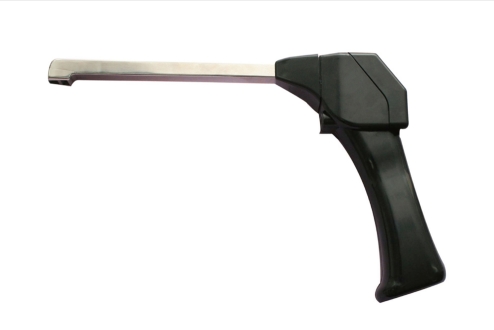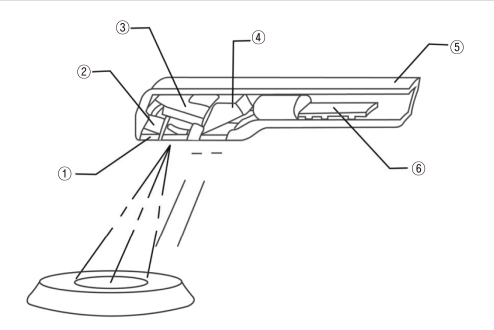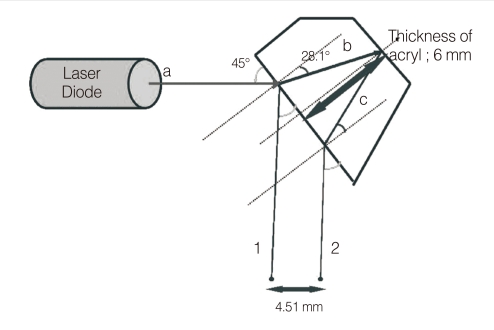Clin Exp Otorhinolaryngol.
2011 Dec;4(4):199-203.
Development of Laser Ruler in Rigid Laryngoscope
- Affiliations
-
- 1Department of Otorhinolaryngology-Head & Neck Surgery, School of Medicine, Pusan National University, Busan, Korea.
- 2Department of Biomedical Engineering, College of Natural Resource & Life Sciences, Pusan National University, Busan, Korea. bjshin@pusan.ac.kr
Abstract
OBJECTIVES
The objective of this study was to develop a new device that provides a simple, noninvasive method of measuring accurate lesion size while using an endoscope.
METHODS
We developed a rigid laryngoscope with a built-in laser-ruler using a one-light emitting diode and an acrylic plate. The invention incorporates a built-in laser diode that projects an auto-parallel beam into the optical path of the rigid laryngoscope to form two spots in the field of view.
RESULTS
While the interspot distance remains consistent despite changes in focal plane, magnification, or viewing angle of the laryngoscope, projection to an uneven surface introduces certain variations in the shape, and size of the spots, and the distance between the two spots.
CONCLUSION
The device enables a laryngologist to easily measure the distance between landmarks, as well as the change in real size, and the progressive change of vocal fold lesions in an outpatient setting.
Keyword
MeSH Terms
Figure
Reference
-
1. H Heckele. Endoscope with distance measuring device. United State patent US. 4,271,892. 1981. 6. 09.2. Herzon GD, Zealear DL. New laser ruler instrument for making measurements through an endoscope. Otolaryngol Head Neck Surg. 1997; 6. 116(6 Pt 1):689–692. PMID: 9215386.
Article3. Nasri S, Sercarz JA, Berke GS. Noninvasive measurement of traveling wave velocity in the canine larynx. Ann Otol Rhinol Laryngol. 1994; 10. 103(10):758–766. PMID: 7944166.
Article4. Hanson DG, Jiang J, D'Agostino M, Herzon G. Clinical measurement of mucosal wave velocity using simultaneous photoglottography and laryngostroboscopy. Ann Otol Rhinol Laryngol. 1995; 5. 104(5):340–349. PMID: 7747903.
Article5. Kobler JB, Rosen DI, Burns JA, Akst LM, Broadhurst MS, Zeitels SM, et al. Comparison of a flexible laryngoscope with calibrated sizing function to intraoperative measurements. Ann Otol Rhinol Laryngol. 2006; 10. 115(10):733–740. PMID: 17076094.
Article
- Full Text Links
- Actions
-
Cited
- CITED
-
- Close
- Share
- Similar articles
-
- Comparison between the Flexiblade Laryngoscope and the Macintosh Blade Laryngoscope in Endotracheal Intubation
- Evaluation of the Efficacy of the Flexiblade Laryngoscope in Endotracheal Intubation
- Comparison of the Macintosh Laryngoscope and the GlideScope(R) Video Laryngoscope in Easy and Simulated Difficult Airway Scenarios: A Manikin Study
- The inhibitory effects, according to infusion rate of remifentanil, on the hemodynamic responses during laryngeal microscopic surgery
- Successful use of C-MAC® video laryngoscope for unexpected severe airway narrowing during anesthesia induction in a patient with a moderate-sized laryngeal tumor






